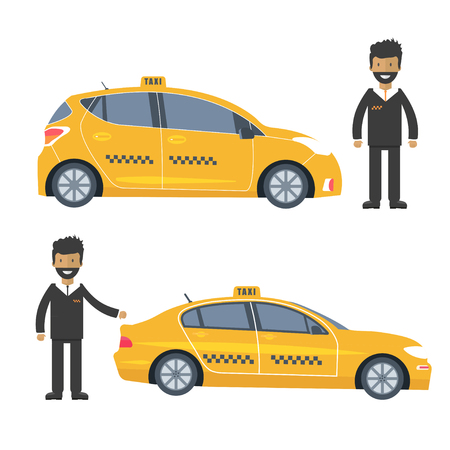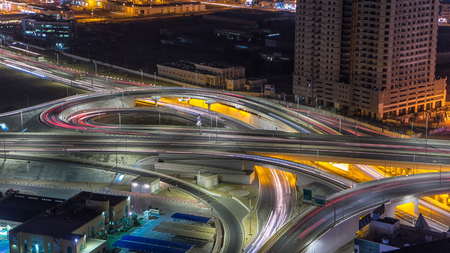Overview of Urban Mobility Challenges in India
India’s urban centres are rapidly expanding, leading to unprecedented challenges in mobility and transportation. The country’s major cities like Mumbai, Delhi, Bengaluru, and Chennai face severe traffic congestion due to a dramatic rise in personal vehicles and inadequate public transit infrastructure. This congestion not only results in significant economic losses but also contributes heavily to air pollution—a persistent issue that affects millions of urban dwellers’ health and quality of life. Compounding these problems is the persistent issue of last-mile connectivity, where commuters struggle to access convenient and affordable transport options from transit hubs to their final destinations. These mobility challenges are further complicated by unique socio-economic factors such as high population density, diverse income groups, informal settlements, and varied travel behaviours influenced by cultural traditions. Addressing these issues requires innovative, inclusive, and culturally sensitive mobility solutions tailored specifically to the Indian context.
Technology-Driven Mobility Innovations
Indias urban transport landscape is undergoing a significant transformation, powered by technology-driven mobility solutions that address the unique challenges of crowded cities like Mumbai, Bengaluru, and Delhi. The integration of cutting-edge technologies such as app-based ride-hailing, seamless digital payment systems, and intelligent traffic management is reshaping daily commutes for millions of Indians. This section examines how these innovations are being tailored specifically for Indian urban environments.
App-Based Ride-Hailing: Making Commutes Smarter
The rapid adoption of app-based ride-hailing services has revolutionised urban mobility across India. Platforms like Ola and Uber have localised their offerings with multi-language support, auto-rickshaw integration, and shared ride options to cater to Indias diverse population. These services offer real-time tracking, fare transparency, and the flexibility to choose vehicle types — from compact hatchbacks to eco-friendly e-rickshaws — providing convenience and customisation for Indian commuters.
Digital Payment Integration: Seamless & Inclusive
Digital payment solutions are at the core of smart urban mobility in India. The rise of UPI (Unified Payments Interface), mobile wallets like Paytm and PhonePe, and QR code-based payments have made transactions cashless and efficient. Public transport operators, ride-hailing apps, and even local auto drivers now accept digital payments, reducing dependency on cash and improving transaction transparency. This shift supports the government’s Digital India initiative while enhancing commuter safety and convenience.
| Technology | Key Features | Indian Adaptation |
|---|---|---|
| App-Based Ride-Hailing | Real-time booking, fare estimation, vehicle choices | Multi-language support, auto & bike taxis, shared rides |
| Digital Payments | UPI integration, e-wallets, QR codes | Widespread acceptance from metro to rickshaws |
| Smart Traffic Management | Sensors, AI analytics, adaptive signals | Pilot projects in Bengaluru & Delhi; focus on congestion hotspots |
Smart Traffic Management: Easing Urban Congestion
With urban road networks under pressure from increasing vehicle numbers, smart traffic management systems are being deployed in major Indian metros. Technologies such as AI-powered traffic signal controls, real-time congestion monitoring through IoT sensors, and data-driven route optimisation are helping city authorities manage peak-hour flows more efficiently. Initiatives like Bengaluru’s Adaptive Traffic Control System (ATCS) demonstrate the potential for significant reduction in travel times and improved air quality when global best practices are customised for Indian conditions.

3. Inclusive and Accessible Solutions
Urban mobility in India must address the diverse needs of its population, ensuring that innovative transport solutions cater to everyone, especially women, senior citizens, and differently-abled individuals. Recognising the unique challenges faced by these groups, modern mobility services are now being designed with an inclusive approach. Features such as low-floor buses, wheelchair ramps at metro stations, reserved seating, and real-time safety alerts on ride-hailing apps directly respond to local requirements.
Women-Centric Safety Measures
Given concerns about women’s safety in Indian cities, several urban mobility providers have introduced gender-sensitive features. These include female-only compartments in metros, pink auto-rickshaw services driven by women, and mobile applications with SOS buttons and live tracking options. Such measures foster confidence among women commuters and encourage greater participation in public transport.
Accessibility for the Elderly and Differently-Abled
Transport systems are increasingly focused on the elderly and differently-abled population by integrating accessible infrastructure such as tactile paving for the visually impaired, audio announcements, and ramps at bus stops and railway stations. The implementation of electric vehicles with easy boarding designs further enhances mobility for those with physical limitations.
Localisation of Mobility Services
To ensure relevance to Indian users, service providers actively localise their offerings—for instance, customer support in regional languages, route planning based on community feedback, and collaboration with local authorities to improve first-and-last-mile connectivity. By embedding cultural sensitivity and local context into their solutions, urban mobility platforms can bridge gaps in access while maintaining safety as a core priority.
4. Sustainable Mobility and Green Transport Initiatives
India’s urban transport ecosystem is undergoing a significant transformation as cities embrace sustainable mobility and green transport initiatives. With rising concerns over air pollution, traffic congestion, and fossil fuel dependence, there is a growing emphasis on eco-friendly transportation modes specifically tailored to meet Indian urban needs.
Electric Vehicles (EVs): Driving Clean Urban Commutes
Indian metros like Delhi, Bengaluru, and Hyderabad have started deploying electric vehicles (EVs) in both private and public transport sectors. EV adoption is being propelled by government incentives, subsidies under the FAME (Faster Adoption and Manufacturing of Hybrid and Electric Vehicles) scheme, and increasing investment in charging infrastructure. From electric cars and two-wheelers to buses, these vehicles are helping reduce carbon emissions while providing cost-effective solutions for daily commuters.
Shared Electric Auto-Rickshaws: A Localised Innovation
Auto-rickshaws are an integral part of urban mobility in India. The shift towards shared electric auto-rickshaws represents an innovative approach that aligns with both sustainability and affordability. These e-autos not only cut down operational costs for drivers but also offer last-mile connectivity for passengers in crowded city areas. Shared rides further optimize route efficiency and reduce the number of vehicles on road, thereby minimising congestion and pollution.
Electrification of Public Transport: Metro, Buses, and Beyond
Cities like Mumbai, Chennai, and Ahmedabad are investing heavily in electrifying their public transport fleets. The transition from diesel-powered buses to electric buses is supported by public-private partnerships and state government policies. Urban metro systems are expanding with energy-efficient coaches that draw power from renewable sources where possible.
Key Green Mobility Solutions in Indian Cities
| Mode | Key Cities | Sustainability Benefits |
|---|---|---|
| Electric Buses | Pune, Hyderabad, Kolkata | Zero tailpipe emissions; quieter operation; lower maintenance cost |
| Shared E-Rickshaws | Noida, Gurugram, Lucknow | Affordable last-mile connectivity; reduced traffic; clean energy use |
| Metro Electrification | Bengaluru, Delhi, Kochi | Energy-efficient mass transit; reduced urban pollution |
Towards Greener Urban Futures
The integration of these sustainable solutions demonstrates India’s commitment to fostering cleaner, greener urban environments. As technology advances and policy support strengthens, Indian cities are poised to serve as models for innovative green mobility tailored to local contexts.
5. Public-Private Partnerships and Start-up Ecosystem
The transformation of urban mobility in India is greatly influenced by the synergy between government bodies, start-ups, and local technology companies. Public-Private Partnerships (PPPs) have emerged as a driving force in developing innovative transport solutions tailored to the unique challenges of Indian cities. Through collaborative frameworks, various stakeholders are able to leverage each others strengths and resources, accelerating the deployment of smart mobility solutions across metropolitan areas.
Government Initiatives Fueling Innovation
Central and state governments have introduced multiple schemes such as Smart Cities Mission, FAME India, and Atal Innovation Mission to encourage the adoption of clean and efficient mobility technologies. These initiatives often provide funding support, regulatory clarity, and infrastructure development, creating a fertile environment for innovation. Local authorities are also increasingly open to pilot programs, enabling start-ups to test solutions like app-based ride-sharing, e-mobility, and intelligent traffic management systems in real-world settings.
Start-up Culture: Disrupting Urban Transport
Indias vibrant start-up ecosystem is at the forefront of mobility innovation. Homegrown ventures such as Ola, Rapido, Yulu, and Bounce have rapidly scaled their operations by addressing pain points like last-mile connectivity and affordable commuting. These companies blend indigenous insights with advanced technology—such as AI-powered route optimization, digital payments integration, and real-time vehicle tracking—to offer user-centric services that resonate with the urban Indian populace.
Local Tech Companies: Bridging Gaps and Scaling Solutions
Collaboration with established tech firms ensures scalability and robustness for new-age mobility platforms. Indian IT giants and telecom operators contribute expertise in cloud computing, IoT deployment, and data analytics—critical components for managing large fleets or integrating multiple modes of transport into seamless Mobility-as-a-Service (MaaS) offerings. This partnership-driven approach has enabled faster implementation of contactless ticketing systems in metro networks and improved interoperability among public transport modes.
Cultural Relevance and Grassroots Impact
What sets Indias mobility revolution apart is its sensitivity to local contexts—be it language diversity on mobile apps or solutions tailored for auto-rickshaw aggregators in Tier-II cities. Many start-ups collaborate closely with municipal corporations and resident welfare associations to ensure solutions are accessible, inclusive, and scalable. By fostering PPPs within the unique Indian socio-economic fabric, stakeholders are not just shaping smarter cities but also creating employment opportunities and supporting sustainable development goals.
6. Policy Frameworks and Government Initiatives
India’s urban mobility transformation is strongly influenced by progressive policy frameworks and government-led initiatives aimed at fostering innovation and sustainability in public transport. The Smart Cities Mission stands as a flagship programme, encouraging the integration of intelligent mobility solutions such as real-time traffic management, multimodal transit hubs, and digital fare systems. This mission targets holistic urban development with an emphasis on smart mobility to improve ease of living for citizens.
The FAME India Scheme (Faster Adoption and Manufacturing of Electric Vehicles) is another pivotal policy, specifically designed to accelerate the adoption of electric vehicles (EVs) across public and private sectors. By offering incentives for EV purchases, supporting charging infrastructure deployment, and promoting local manufacturing, FAME India directly supports sustainable urban transport modes suitable for Indian cities.
At the local level, municipal corporations and state governments are also implementing targeted policies such as dedicated cycle lanes, integrated bus rapid transit (BRT) corridors, and app-based ride-sharing regulations. These efforts facilitate seamless mobility experiences while addressing region-specific challenges like congestion and pollution. Collectively, these government initiatives not only catalyse innovative transport solutions but also ensure they are tailored to meet the unique demands of India’s diverse urban landscapes.


